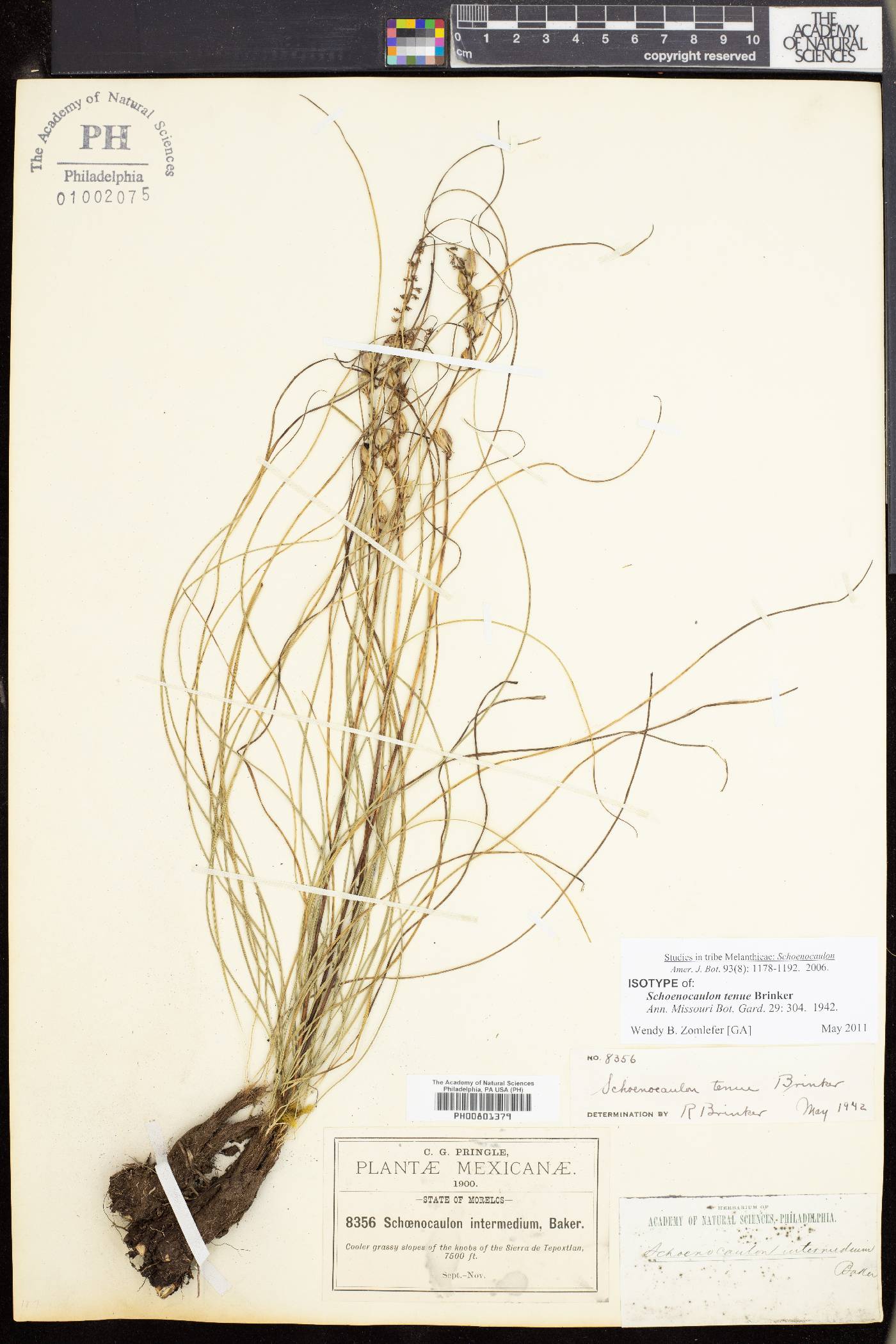Schoenocaulon
|
Family: Melanthiaceae |
Herbs, perennial, scapose, from tunicate bulb-rhizomes. Leaves narrow, grasslike, emerging conduplicate from neck of fibrous tunic. Inflorescences racemose, simple; racemes spikelike, flowers subtended by a persistent, membranous bract; distalmost bracts empty or concealing rudimentary flowers. Flowers: proximalmost bisexual, distalmost functionally staminate; tepals withering-persistent, 6, distinct, equal, leathery to slightly petaloid, yellowish green, green, or greenish purple, not clawed, linear-lanceolate to ovate, margins entire to crenulate or minutely denticulate; hyaline basal auricle sometimes present; perigonal nectaries not well developed; stamens 6, distinct; filaments withering-persistent, subulate or rarely distally dilated, 1.5-2.5 times tepal length; anthers basifixed, narrowly sagittate before dehiscence, explanate after, extrose; ovary superior, 3-locular, locules barely cohesive to connate; styles persistent, 3, distinct. Fruits capsular, 1-3-locular, dehiscence septicidal. Seeds 1-8 per locule, ellipsoid to ovoid or conic, irregularly compressed or angled by mutual pressure. x = 8. Schoenocaulon has rarely been collected in the United States in recent times; all three species are possibly threatened. The genus is a source of cerveratrum alkaloids.
|

